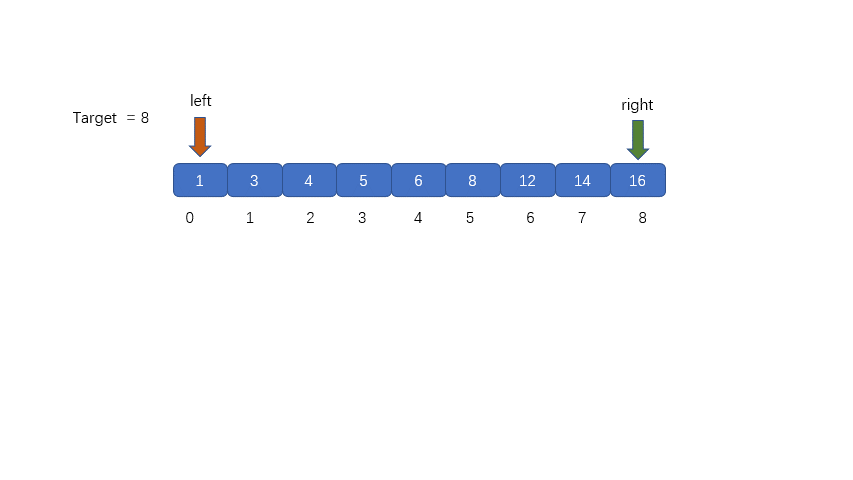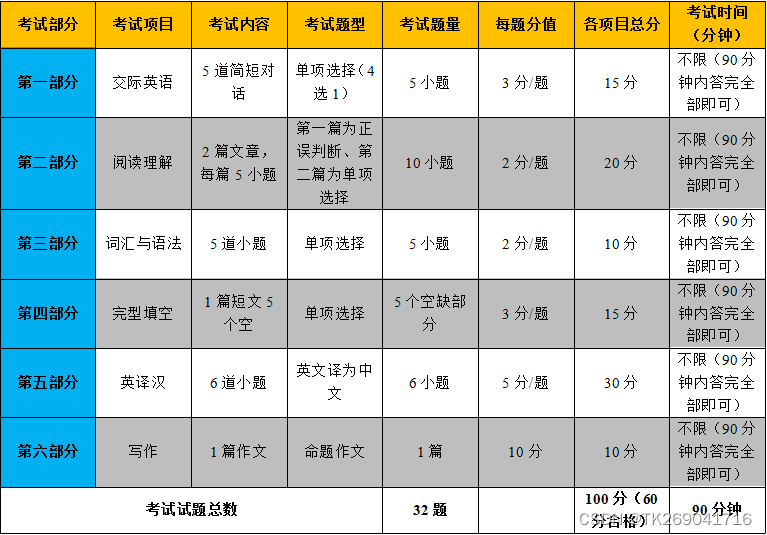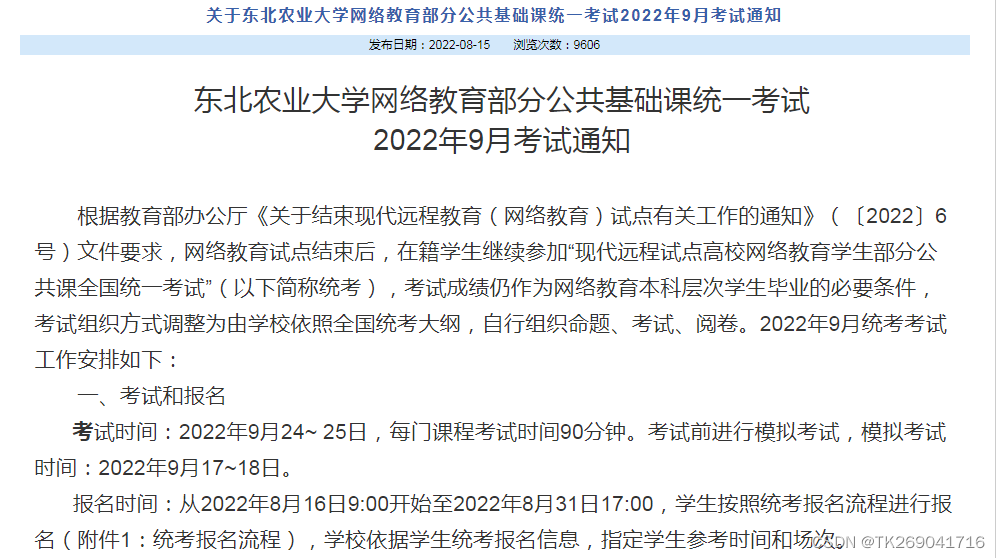说专转本得英语者得天下,英语是所有专转本专业类别的必考科目,也是拉分科目。
之前有转本人问老师,基础不好,短时间怎么把分数提上去?
综合来看,“阅读理解”是最好提分的一个题型。“阅读理解”是很多省份英语考试中的必考题型,也是丢分最多的题型,那要怎么样才能那分?
先来分析一下阅读理解丢分原因:
①单词量不够,无法理解文章的全部内容。
②答题无章法、无技巧,造成前面耗时过多,后面为了追速度,草草阅读,出错率高。
阅读理解答题技巧
细节理解题
考查内容主要涉及时间、地点、人物、事件、原因、结果、数字等议论文中例证细节和定义类细节。这类题目的共同特点是:答案一般都能在文章中找到。
1.事实细节题→寻读法分为直接理解题和间接理解题,前者常用who, what, which, when, where, why和how提问,或判断正误;后者需与原文信息转换,表达上与原文有差异。常见命题形式有:1.What can we learn from the passage?2.All the following are mentioned except?3.Which of the following is mentioned (not mentioned)?4.Which of the following statements is true/right/false/wrong about…?
2.排列顺序题→首尾定位法(找出第一个事件和最后一个事件,用排除法缩小范围)常出现在记叙文和说明文中,一般按事件发生的顺序。常见命题形式有:1.Which of the following is the correct order of…?2.Which of the following shows the path of signals described in Paragraph…?
3. 图文匹配题→按图索骥理清线索设题形式:给出图表,根据图表提问问题。
4. 数字计算题→(方法:审题→带着问题找细节→对比、分析、计算)可直接找到相关细节,但需经过计算方可找到答案。
推理判断题
主要考查学生对文章中隐含或深层的含意的理解能力。它要求考生根据文章内容做出合乎逻辑的推断,包括考生对作者观点的理解,态度的判断,对修辞、语气、隐含意思等的理解。
题干关键词:infer(推断),indicate(象征,暗示), imply/suggest(暗示), conclude(作出结论), assume(假定,设想)。
1.细节推理判断题一般可根据短文提供的信息或借助生活常识进行推理判断,常见命题形式有:1.It can be inferred/ concluded from the text that __________.2.The author implies/ suggests that_____.3.We may infer that _________.4.Which of the following statements is implied but NOT stated?
2.预测推理判断题根据语篇对文章接下来的内容或可能的结局进行猜测,常见命题形式有:1.What do you think will happen if/when…?2.At the end of this passage, the writer might continue to write_____.
3.推测文章来源或读者对象常见命题形式有:1.The passage is probably take out of_____.2.The passage would most likely be found in_____.3.Where does this text probably come from?
词义猜测题
考点:①猜测某个词、词组、句子的意义②对文中的多义词或词组进行定义③判断某个代词的指代的对象。常见命题形式有:1.The underlined word/phrase in the second paragraph means _____.2.The word “it/they” in the last sentence refers to______.3.The word “…”(Line 6. para.2)probably means ______.4.The word “…”(Line 6. para.2)could best be replaced by which of the following?5.Which of the following is closest in meaning to the word “…”?
解答技巧:1.通过因果关系猜词首先是找出生词与上下文之间的逻辑关系,然后才能猜词。有时文章借助关联词(如because,as,since,for,so,thus,as a result,of course等等)表示前因后果。例如:You shouldn't have blamed him for that,for it wasn't his fault.通过for引出的句子所表示的原因(那不是他的错),可猜出blame的词义是"责备"。
2.通过同义词和反义词的关系猜词通过同义词猜词,一是要看由and或or连接的同义词词组,如happy and gay,即使我们不认识gay这个词,也可以知道它是愉快的意思;
二是看在进一步解释的过程中使用的同义词,如Man has known something about the planets Venus,Mars,and Jupiter with the help of spaceships.此句中的Venus(金星)、Mars(火星)、Jupiter(木星)均为生词,但只要知道planets就可猜出这几个词都属于"行星"这一义域。
通过反义词猜词,一是看表转折关系的连词或副词,如but,while,however等;
二是看与not搭配的或表示否定意义的词语,如:He is so homely,not at all as handsome as his brother.根据not at all...handsome我们不难推测出homely的意思,即不英俊、不漂亮的意思。
3.通过构词法猜词根据前缀、后缀、复合、派生等构词知识判断生词词义。如:She is unlikely to have stolen the money. ( “un”含否定意义,故为“不太可能”之意。)


















